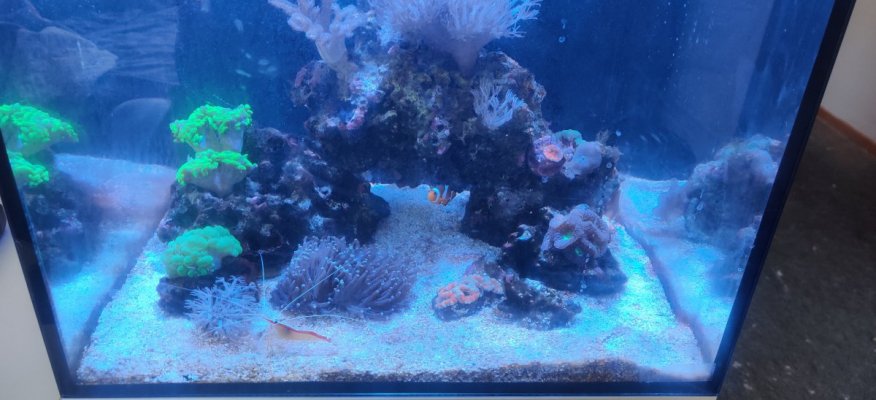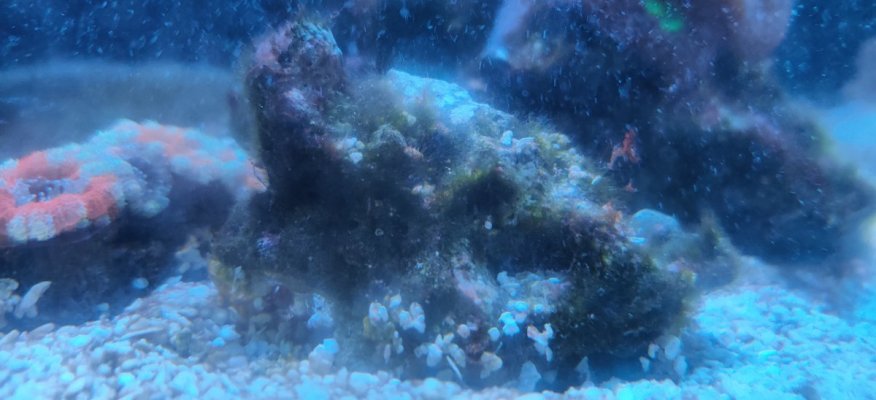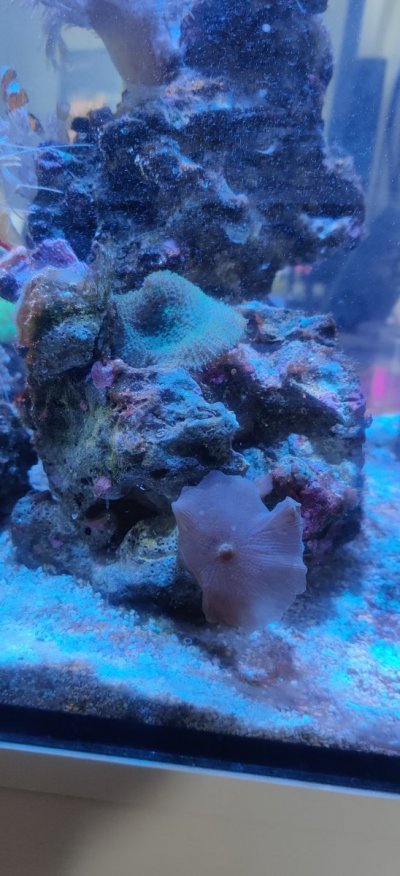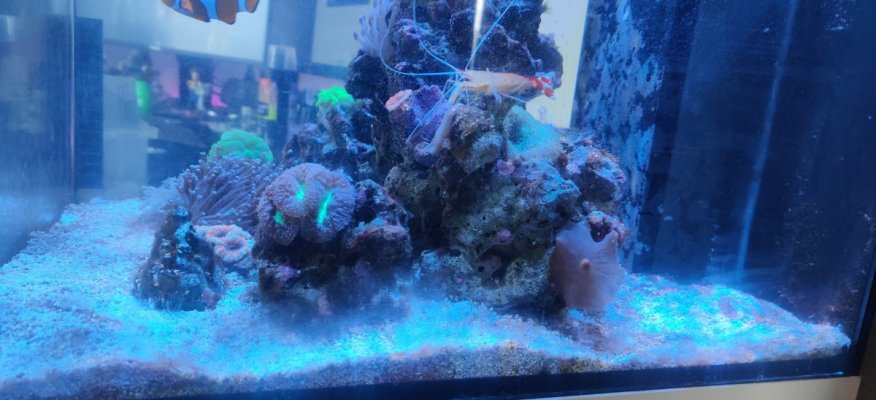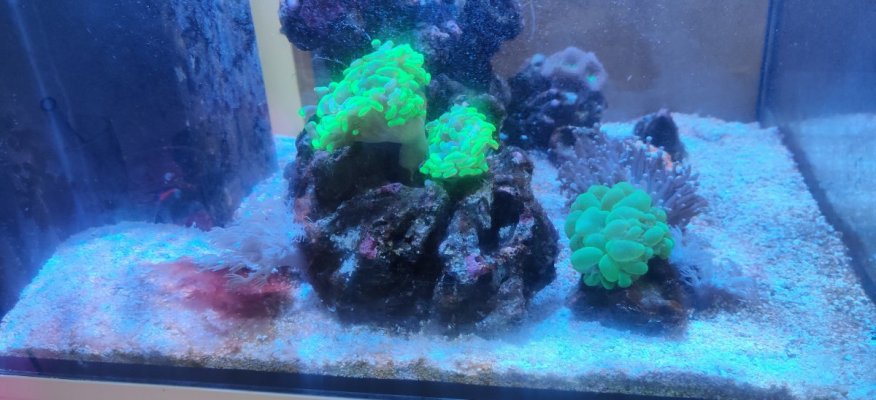The run down:
Tanks around 10months old, rock was used from an older tank.
80L display tank
25L sump
1x Jebao 10 Wavemaker (waterflow seems good as you can see the cyano moving around easily)
(also have turned up the return pump for even more flow)
Skimmer: Doesn't seem to catch much im running it wet atm
(its a coral box d300 plus, alittle over kill for the tank think the neck is too large for bubble to foam all the time)
HD prime light runs 11am to 6pm (Blue 90% UV 50% V 50% CW 25%)
small lps corals (torch, blaso, mushrooms, finger leather, acan, xenia, bubble)
1x small BTA
2x clown fish (1.5inchs)
1x tri color blenny (2inchs)
1x yellow goby (2inchs)
1x Cleaner shrimp
I have been testing
p04 Hannah tester: 0.04
api test kit: Nitrates 10-20ppm
ro/di water used
red sea blue bucket
doing 50% water changes weekly
I have cyano bacteria over the tank and that keeps coming back and very small amount of green hair algae I have been feeding ever 2nd day now to try stop the cyano but still no luck, Seems like its coming back worst/faster.
I feeding a very small pinch in the morning and again at night.
My question is, are the test results coming back wrong due to the hair algae and cyano bacteria already in the tank, should I be feeding more to get the nutrition levels up.
I keep reading cyano thrives in low nitrate environments, yet im at 10-20ppm
I have redsea no3po4 here should I start dosing this?
Tanks around 10months old, rock was used from an older tank.
80L display tank
25L sump
1x Jebao 10 Wavemaker (waterflow seems good as you can see the cyano moving around easily)
(also have turned up the return pump for even more flow)
Skimmer: Doesn't seem to catch much im running it wet atm
(its a coral box d300 plus, alittle over kill for the tank think the neck is too large for bubble to foam all the time)
HD prime light runs 11am to 6pm (Blue 90% UV 50% V 50% CW 25%)
small lps corals (torch, blaso, mushrooms, finger leather, acan, xenia, bubble)
1x small BTA
2x clown fish (1.5inchs)
1x tri color blenny (2inchs)
1x yellow goby (2inchs)
1x Cleaner shrimp
I have been testing
p04 Hannah tester: 0.04
api test kit: Nitrates 10-20ppm
ro/di water used
red sea blue bucket
doing 50% water changes weekly
I have cyano bacteria over the tank and that keeps coming back and very small amount of green hair algae I have been feeding ever 2nd day now to try stop the cyano but still no luck, Seems like its coming back worst/faster.
I feeding a very small pinch in the morning and again at night.
My question is, are the test results coming back wrong due to the hair algae and cyano bacteria already in the tank, should I be feeding more to get the nutrition levels up.
I keep reading cyano thrives in low nitrate environments, yet im at 10-20ppm
I have redsea no3po4 here should I start dosing this?
Last edited:









